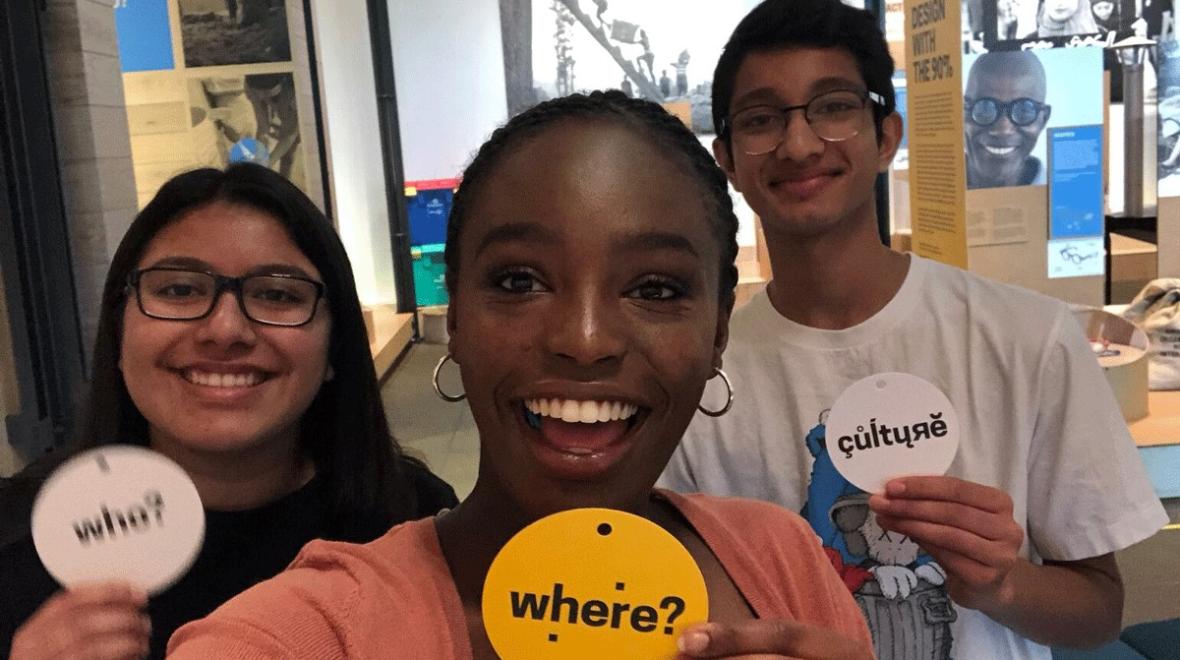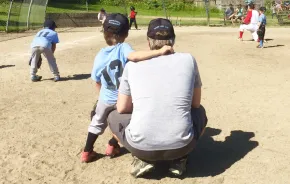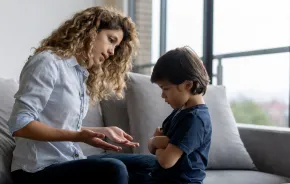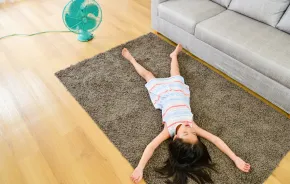
Photo:
©Bill & Melinda Gates Foundation
Editor’s note: This article was sponsored by the Gates Foundation Discovery Center.
Most adults understand that little kids need the kind of free play that occurs during recess and at the playground. But those same adults often have a totally different attitude about teens hanging out. Simona Zappas, youth program manager at the Gates Foundation Discovery Center, is not one of those adults.
“Hanging out describes casually spending time together. I think what defines it is openness. It’s not facilitated and there’s not necessarily a goal to it,” says Zappas. “Because there is no goal, it can be devalued. It’s easy to think, especially when we’re talking about teenagers, that they’re doing nothing. But hanging out is different than wasting time.”

Benefits of hanging out
Teenagers need to hang out the same way little kids need recess, and for many of the same social and developmental reasons that go much deeper than simply relaxing.
“Deep hanging out is the sharing and learning that happens from taskless time together,” says Zappas. “For example, the other day I went to Scarecrow Video with a friend and there was no goal. We just wandered the aisles and pulled random things and talked about them. We were finding new ideas and learning about movies. It felt really good.”
Today’s teenagers stand to benefit from hanging out even more than previous generations.
“During the pandemic they lost a lot of key social development time. They lost time to learn how to be in different spaces. Teens are really keen and really excited to have authentic, in-person experiences and just participate in the city,” says Zappas.
Besides a chance to practice social skills, hanging out also helps young people develop agency, leadership, decision-making and problem-solving skills. Zappas points out that for teens, power usually flows in one direction. Teens are expected to follow instructions from teachers, parents and coaches during most of their activities. “Hanging out, you have to find something to do. That leads to invention. Even if the teens are just talking to each other, that can still build creativity and connection and deepen abstract thinking. It also develops comfort with something being open-ended and not knowing what’s next,” says Zappas. She refers to the acronym HOMAGO, which stands for “Hanging Out, Making Art and Geeking Out.”
“It refers to the formula for loosely facilitated time where teens have options for activities but also have control over how they engage with those options. When your hands are busy doing something, it can be easy to open your mind and have unexpected conversations. Even something simple like making a bracelet is still a form of risk-taking, being creative and vulnerable. They might be trying something they’ve never done. These really gentle ways to test out harder skills often get dismissed as hanging out. But it’s great that they’re hanging out!” says Zappas. “That’s a powerful thing.”
Engaging in hands-on activities without larger pressures or constraints can also make an otherwise intimidating space — such as a museum — feel more casual and approachable.
Obstacles to hanging out
“What often gets dismissed in the social narratives about teenagers is they have a lot of responsibilities. A lot of teenagers care for siblings, a lot of them work,” Zappas explains. Competitive college admissions, the ubiquity of social media, the decline of shopping malls and a rise in gun violence have also chipped away at teens’ opportunities to hang out. When they do go out in public together, they don’t always find public spaces welcoming.
“Maybe it’s because teenagers hanging out look different from adults hanging out — they might be louder and more physical. Being a teenager is really about starting to understand boundaries by pushing them, so maybe they’re still learning what some of the expectations are in these public spaces, and all they’re hearing is ‘no,’ and that kind of unwelcoming, immediate distrust,” Zappas explains.
While there are still too many “no places” that can’t tell the difference between “hanging out” and “getting up to something,” Zappas and many others understand that having safe places to hang out can actually help keep kids out of trouble.
Fortunately, there are a lot of “yes places” where teens can be comfortable hanging out. These are the institutions that both understand teens’ rowdiness and clearly communicate community standards in language that is welcoming and respectful.

Teen Lounge
The Discovery Center’s Teen Lounge is one example. It comes at the end of Teen Week, four days of workshops related to the work of the Gates Foundation, including communicable diseases, global agriculture and education in the U.S. Although signups for these sessions are already full, Teen Lounge opens up the Discovery Center to all teens in the community for a free celebration on Thursday, July 25. “It’s low-key, nothing fancy, but the space is designed to be a fun time with teenagers in mind,” says Zappas. Gates Foundations’ Youth Ambassadors (applications for next year open July 15) planned the event with music, food and activities all sharing space with the regular exhibits from 3 to 6 p.m. Besides a chance to hang out, the event serves as an introduction to the Discovery Center, which welcomes teens to hang out on their own with free admission year-round.
Recipe for hanging out
“There are folks at tons of organizations that are making experiences that help teens see these places are welcoming them,” Zappas describes. “We have to meet teenagers where they’re at — so think about things that are fun for them, that are developmentally appropriate that they’re going to actually want to do.” Rec centers are an example of spaces where teens automatically feel comfortable. But some of the best hang outs also stretch teens’ horizons.
“Other spaces, such as museums or the Gates Foundation, might not be the first spot where teens imagine themselves. There has to be someone who thoughtfully created an environment for teens. That care and facilitation of the space creates entry points for young people to feel comfortable, relax and really just hang out,” says Zappas.
Parents can create hangout space at home with flexible seating options, plenty of snacks and opt-in activities like board and card games or art supplies. Public spaces often set out interesting books, provide free Wifi and develop dedicated tools like gallery guides for teens. A helpful adult who is present but in the background is another key ingredient.
“The adult might not be facilitating the conversations but if needs come up, there’s an adult there for them who knows how to talk to them,” reminds Zappas.
Finding your hangout
From creating space in the house — and in schedules — to giving rides to meet friends, parents have a behind-the-scenes role in successful hangouts. They can also lay groundwork by exposing their families to a wide variety of environments and social circumstances. Teens are more likely to visit a place with their friends if they are already familiar with it.
“Facilitated spaces are a great compromise, too, for parents who are just starting to have their kids practice some of that independence but can still feel safe because there is an adult there.” One great example is Tacoma Public Schools’ Summer Late Nights. Community centers, parks departments, maker spaces and public libraries around the region also offer teen drop-in programs. Designed for safety to protect the objects on display, museums can be another great choice and often have dedicated spaces or times for teens.
“It doesn’t have to be complicated,” Zappas points out. Browsable spaces such as bookstores and record stores offer unfacilitated, open-ended opportunities for discovery. So does aimless wandering at a neighborhood park, the Washington Park Arboretum or the rose garden at Woodland Park Zoo. People of all ages are most likely to engage with programs and places that connect to their own interests. The Vera Project is a space for youth-driven music and art while TeenTix $5 ticket program makes other arts venues accessible to teens. The Gates Foundation Discovery Center will appeal to teens who care about STEM and social issues.
“The name is right. There’s tons of stuff to discover there. It’s somewhere where you can deep dive into one topic that you might be really interested in. Every single point in the space is completely interactive, but at no point is it overburdening with a total information overload,” says Zappas. “Throughout the day we have staff doing pop-up talks. It’s a chance to have a participatory, facilitated tour or if teens feel a little unsure how to be in the space they have folks that they can come to who will be knowledgeable and empathetic.”
The newest exhibit is "A Better Way to Go: Toilets and the Future of Sanitation."
Zappas explains the appeal. “It’s really looking at what do we do with all of the poop in the world? There’s a lot of humor in it and there’s really interesting science and the understanding that having a safe place to go to the bathroom is a major part of folks’ quality of life and making the world a better place,” said Zappas. “I find the show really hopeful. Teens are inheriting a lot of problems in the world, and I think that it can feel a little overwhelming. I think that they’ll find that hopeful feeling across the entire Discovery Center. We’re showing things that are actively being done to identify solutions and get them out to the people who need them.”
|
Sponsored by: |
 |











